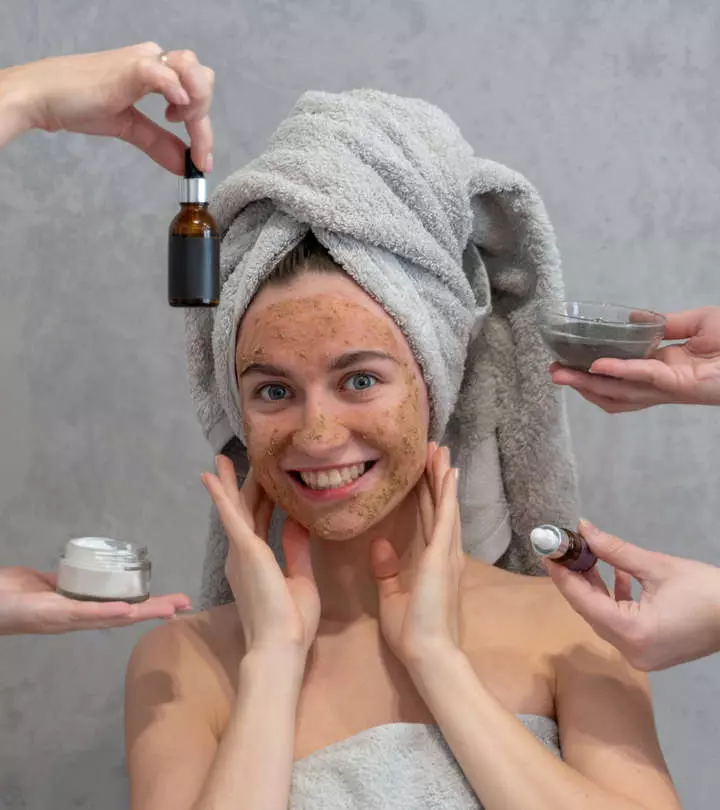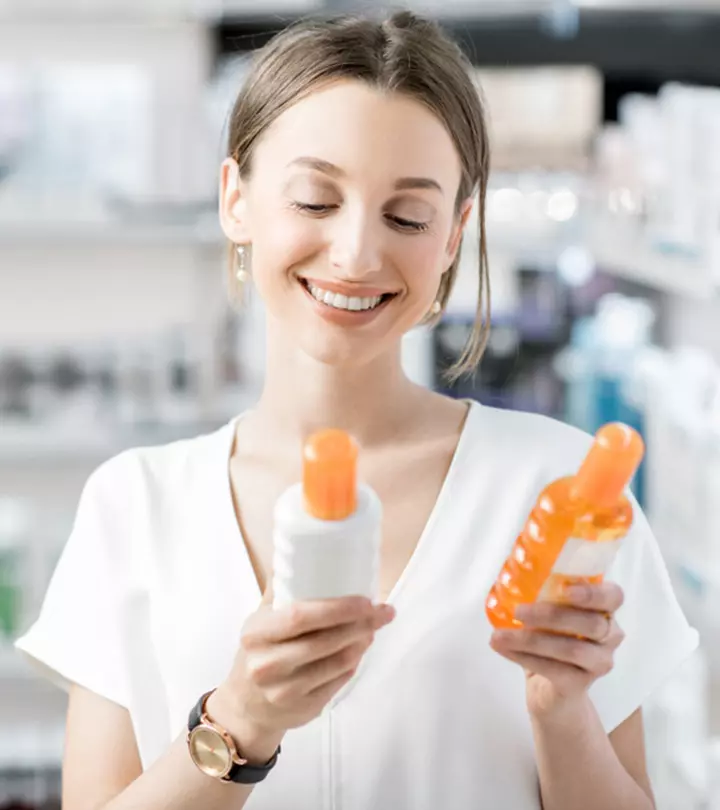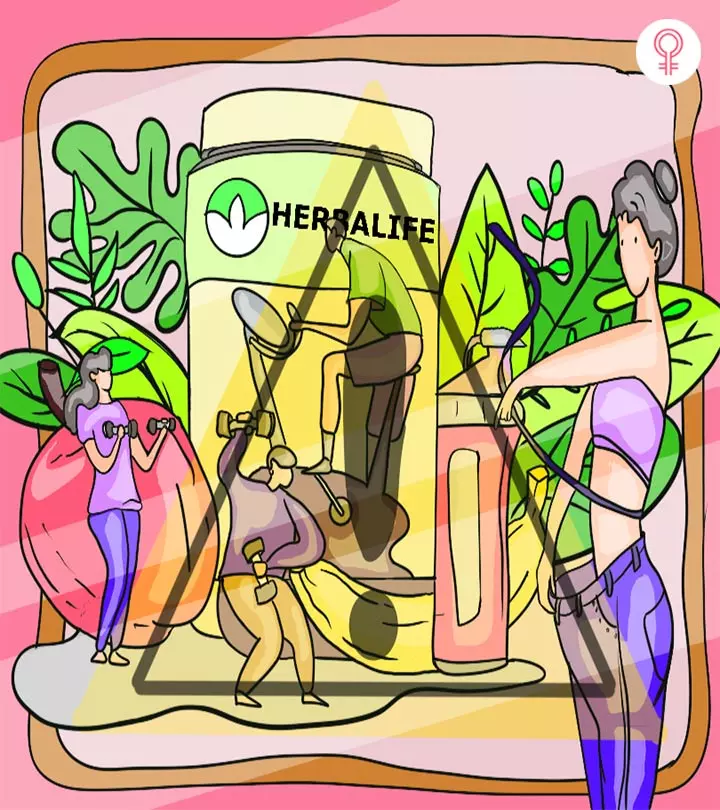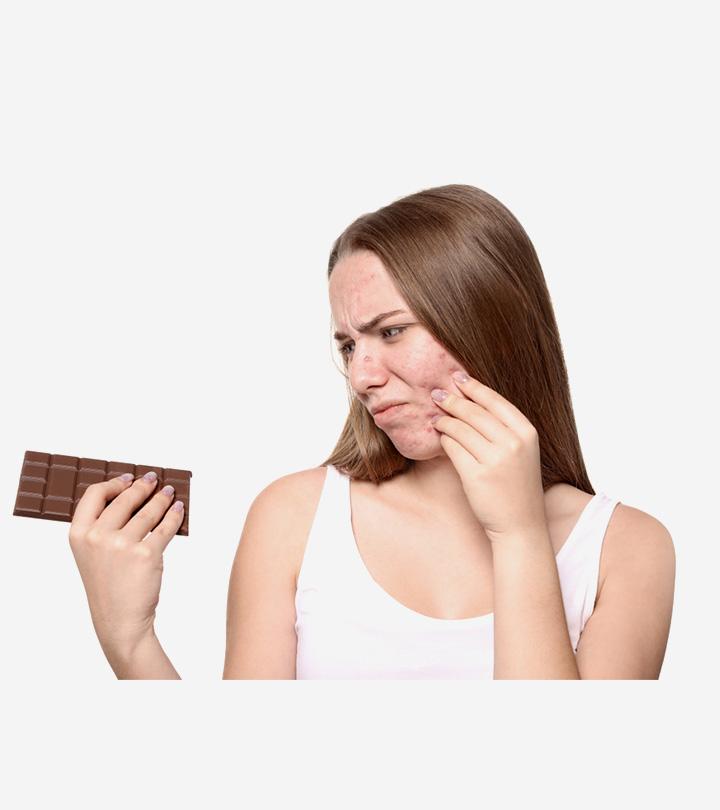Chemical Vs. Physical Sunscreen: How It Works & Pros And Cons
Learn the characteristics of different sunscreens and decide which one your skin needs.

Image: Shutterstock
If you plan to spend time under the sun, wearing sunscreen is a must. But, for that, you should first decide which sunscreen you should choose. Physical vs. chemical sunscreen is an interesting debate that is going around these days, and most of us find ourselves caught in it.
Both physical and chemical sunscreens shield your skin from sun damage. Extreme exposure to the sun results in wrinkles, sunburn and even increases the risk of melanoma cancer. Sunscreen helps prevent these harmful effects and minimize the adverse effects of UV rays (1).
When purchasing sunscreen, if you find yourself divided between physical and chemical formulas, we can help clear your doubts. This article explains the difference between physical and chemical sunscreens and the pros and cons of both to help you make an informed choice. Read on.
In This Article
Do Physical And Chemical Sunscreens Have Different Ingredients?
Sunscreens are categorized as OTC (Over-the-Counter) drugs in the US, and are regulated by the FDA (Food and Drug Administration). But there are some differences between physical and chemical sunscreens.
These two sunscreen types contain different ingredients. Physical sunscreens have natural minerals like zinc oxide and titanium oxide. Chemical sunscreens, on the other hand, have carbon-based compounds like octinoxate, avobenzone, octisalate, oxybenzone, and octocrylene (2). The type of ingredients used in a sunscreen determines its mode of action.
 Trivia
TriviaPhysical and chemical sunscreens work in different ways. We will understand the same in the next section.
How Do Physical And Chemical Sunscreens Work?
Physical Sunscreens
Physical sunscreens work by blocking and deflecting the UV rays from the sun (3). They contain minerals like titanium dioxide and zinc oxide. Titanium dioxide is a natural mineral used in many cosmetic products. It is a white pigment that stays stable even after exposure to UV radiation. Zinc oxide deflects and scatters the UV rays. This property of zinc oxide blocks the UV rays and prevents them from penetrating the skin. Physical sunscreen uses fewer ingredients that are mostly natural minerals.
Chemical Sunscreens
Chemical sunscreens absorb harmful UV radiation. The carbon-based compounds in these sunscreens cause a chemical reaction when exposed to the sun. This reaction converts the UV rays into heat, which is later released from the skin.
Some commonly used compounds in chemical sunscreens include octisalate (that absorbs UVB rays) and oxybenzone and octocrylene (that absorbs both UVA and UVB rays). These chemical compounds may also increase the production of free radicals in the body after sun exposure. Some may also increase the risk of contact dermatitis (3).
Both types of sunscreens have their own pros and cons. We will explore them in the upcoming sections.
Pros And Cons Of Using Physical Sunscreens
The Pros
- Physical sunscreens start acting as soon as they are applied.
- They are made of components that benefit the skin. They contain zinc oxide as an active ingredient. Animal studies suggest that zinc oxide may have antibacterial properties (4).
- They do not get absorbed by the skin. Hence, they are less likely to irritate. Physical sunscreens are ideal for people with sensitive skin.
- Physical sunscreens are non-comedogenic. They stay on top of the skin and do not clog pores.
- They are effective against both UVA and UVB rays.
The Cons
- Physical sunscreens are heavier and are difficult to apply.
- They leave a thick white cast or residue on the skin.
- They may stain clothes. They also may get washed off when in contact with sweat or water.
- They may leave some sections of the skin vulnerable to harmful UV radiation.
Pros And Cons Of Using Chemical Sunscreen
Chemical sunscreens work by absorbing harmful UV rays. The compounds used in chemical sunscreens catalyze a chemical reaction.
The Pros
- Chemical sunscreens are thinner and spread easily on the skin.
- They do not leave any residue on the skin and get completely absorbed.
- Less product is required.
The Cons
- The chemicals in the sunscreens may irritate the skin.
- The formulation requires several ingredients for providing broad-spectrum protection against both UVA and UVB rays.
- The sunscreens start working only after 20 minutes of application.
- Chemical sunscreens may cause breakouts by clogging the skin pores.
How To Choose Between Physical And Chemical Sunscreens
Both physical and chemical sunscreens are known to protect the skin from harmful UV rays. However, several dermatologists recommend physical sunscreens, owing to their fewer side effects. You can also decide on which sunscreen to choose based on your preference.
A physical sunscreen is ideal if you prefer using a fast-acting, non-irritant, and reef-friendly product. But if you sweat a lot and prefer easy-to-use products, chemical sunscreens can be ideal.
FDA confirms the safety of the ingredients used in chemical sunscreens. But some health groups speculate about the safety of oxybenzone on people and the environment (5).
You need to understand your skin and choose the best sunscreen to protect it. Note the following points before making a purchase:
- Always choose a sunscreen that is water-resistant and has an SPF of 30 or more.
- Go for sunscreens that protect against broad-spectrum UV rays.
- Apply sunscreen 15-20 minutes before exposing yourself to the sun.
- Apply enough sunscreen to all exposed areas.
- Re-apply sunscreen whenever required.
A survey was conducted with 9000 people in the US to estimate sunscreen application thickness based on calculated body surface area and reported amounts. Results revealed that 70% of the respondents (6325) have used sunscreen in the past year. 69% of the respondents agreed that they use greater amounts of sunscreen on their face as compared to other body areas.
 Quick Tip
Quick TipNow that you understand the distinction between physical and chemical sunscreen, you should learn how to apply sunscreen correctly. It is crucial to remember to use sunscreen, regardless of the type. Physical and chemical sunscreens each have their own benefits. However, it’s important to be aware of potential sunscreen side effects. Many dermatologists recommend physical sunscreens, as they tend to have fewer side effects. Ultimately, you can decide which sunscreen to use based on your skin type and personal preference. Make sure you don’t skip it, whichever option you choose. Using sunscreens may help minimize the chance of developing skin cancer and UV damage.
Frequently Asked Questions
Is chemical sunscreen better than no sunscreen?
Yes. Any sunscreen is better than no sunscreen. Sunscreens are essential skincare products for protection against UV rays. Many doctors recommend using sunscreen indoors to protect against UV rays from lights and screens.
Is chemical sunscreen more effective?
There is no clear winner. Both chemical and physical sunscreen is equally effective in preventing sun damage. However, chemical sunscreens are convenient to use, lightweight, and easy to apply. Physical sunblocks may leave a white cast. Therefore, any sunscreen that feels comfortable on your skin is the best one.
Do physical sunscreens clog pores?
No. Physical sunscreens do not clog the skin pores. However, ensure to remove the traces of sunscreen and makeup from your face at the end of the day. Improper cleansing and residue may lead to breakouts.
Is chemical or physical sunscreen better under makeup?
Chemical sunscreens are better under makeup. They are lightweight and have blendable textures to sit conveniently under makeup.
Is chemical sunscreen bad for hyperpigmentation?
No. Chemical sunscreen will effectively prevent hyperpigmentation. However, it cannot help in removing existing hyperpigmentation issues.
Is chemical or mineral sunscreen better for acne?
Dermatologists recommend using mineral sunscreen if you have acne-prone skin as the ingredients are more gentle on the skin than the actives in chemical sunscreens.
Key Takeaways
- Physical sunscreens block and deflect the UV rays from the sun, whereas chemical sunscreens absorb harmful sun rays, converting them into heat, which is later released from the skin.
- The chemical compounds present in chemical sunscreens may increase the production of free radicals in the body after sun exposure.
- Physical sunscreens leave a thick white cast or residue on the skin.
It’s essential to select a sunscreen that aligns with your skin’s needs and your preferences for application. The video below reveals a doctor’s insights about some crucial aspects to consider when choosing the right sunscreen. Check it out!
References
Articles on StyleCraze are backed by verified information from peer-reviewed and academic research papers, reputed organizations, research institutions, and medical associations to ensure accuracy and relevance. Read our editorial policy to learn more.
- Sunscreen and Prevention of Skin Aging
https://www.acpjournals.org/doi/10.7326/0003-4819-158-11-201306040-00001?articleid=1691732& - Sunscreening Agents: A Review
https://www.ncbi.nlm.nih.gov/pmc/articles/PMC3543289/ - Sunscreens And Photoprotection
https://www.ncbi.nlm.nih.gov/books/NBK537164/ - Effect of topical zinc oxide on bacterial growth and inflammation in full-thickness skin wounds in normal and diabetic rats
https://pubmed.ncbi.nlm.nih.gov/1676317/ - Can oxybenzone cause Hirschsprung’s disease
https://pubmed.ncbi.nlm.nih.gov/30831214/
Read full bio of Dr. Priya Gill
Read full bio of Ramona Sinha
Read full bio of Swathi E


























Community Experiences
Join the conversation and become a part of our empowering community! Share your stories, experiences, and insights to connect with other beauty, lifestyle, and health enthusiasts.